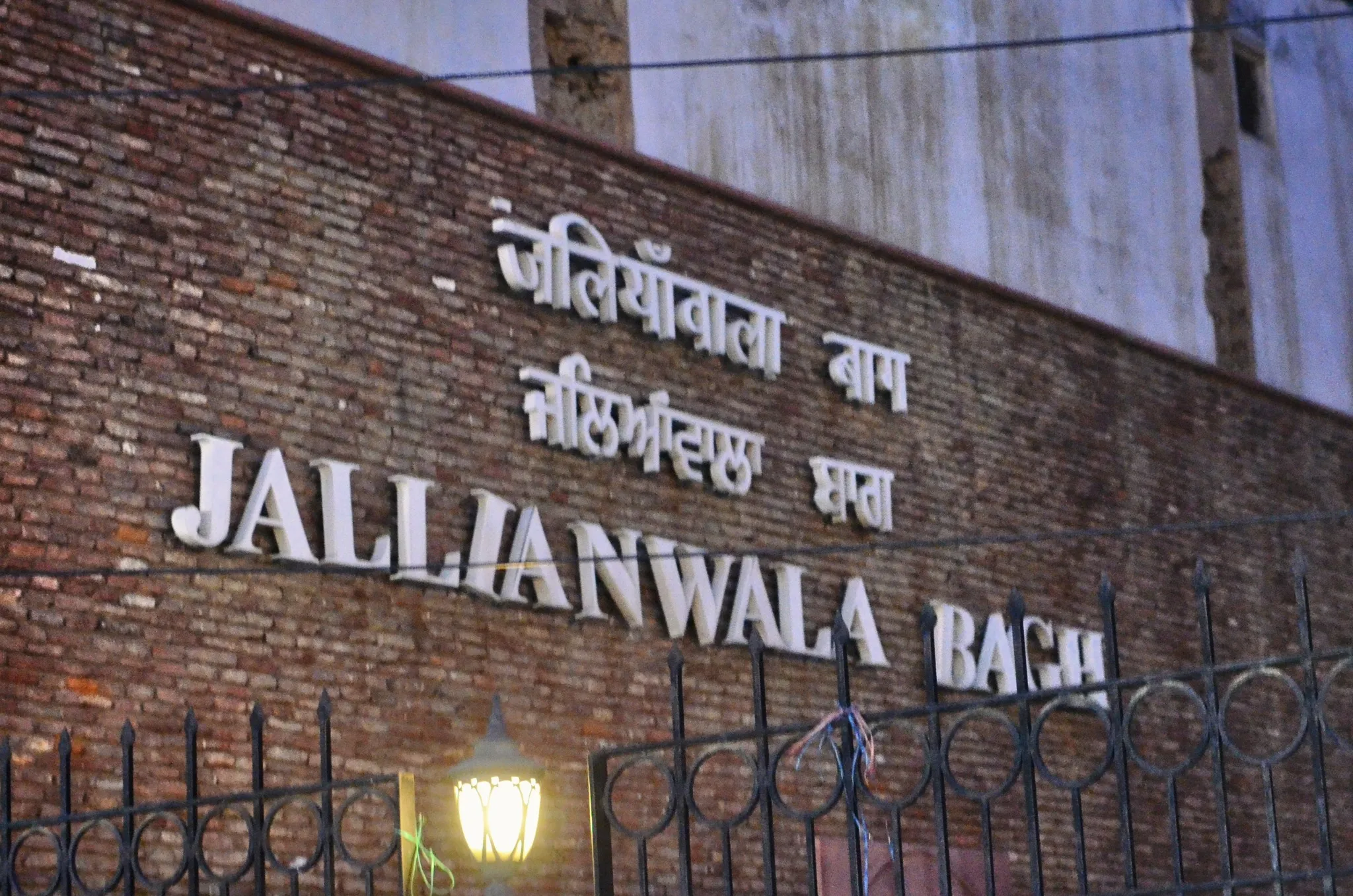On This Day 13 April 2024 Saturday
On This Day 13 April, Sam Vikram: 2081 Purnimanta Mass: Chaitra Paksha: Tithi: Sukla Paksha Shashthi – Apr 13 12:04 PM – Apr 14 11:44 AM, let us have a quick look of the events and anniversaries of India and the world
 Panchang /
Panchang /
Shaka Samvat: 1946
Purnimanta: Chaitra
Tithi: Sukla Paksha Shashthi – Apr 13 12:04 PM – Apr 14 11:44 AM
On This Day
Festivals Today: Baisaakhee, Mesh Sankraanti
Festials Tomorrow: Yamuna Chhath, Shashthee, Jayantee Jayantee
Day Today:
Day Tomorrow: World Chagas Disease Day [WHO]
Yoga:
Sobhana – Apr 13 02:13 AM – Apr 14 12:33 AM
Atiganda – Apr 14 12:33 AM – Apr 14 11:32 PM”
”
Karana:
Balava – Apr 13 12:32 AM – Apr 13 12:04 PM
Kaulava – Apr 13 12:04 PM – Apr 13 11:48 PM
Taitila – Apr 13 11:48 PM – Apr 14 11:44 AM”
Sunrise: 6:01
Sunset: 18:41
Moonrise: 9:11
Moonset: 0:02
 Auspicious Time
Auspicious Time
Abhijit Muhurat – 11:56 AM – 12:46 PM
Amrit Kaal – 04:01 PM – 05:36 PM
Brahma Muhurat – 04:23 AM – 05:11 AM
![]() Inauspicious Time
Inauspicious Time
Rahu – 9:11 AM – 10:46 AM
Yamaganda – 1:56 PM – 3:31 PM
Gulika – 6:01 AM – 7:36 AM
Dur Muhurat – 07:42 AM – 08:33 AM
Varjyam – 06:27 AM – 08:03 AM
Information Source: https://www.prokerala.com/
Today / आज
Freedom Fighters sacrificed- At Least: 487
Major Historical Events
- Jallianwala Bagh Massacre – Historical Atrocity: On April 13, 1919, in Amritsar, Punjab, British Indian Army troops commanded by Reginald Edward Harry Dyer opened fire on a large gathering of unarmed civilians, resulting in the deaths of approximately 379-381 people and injuries to around 1,100. This massacre occurred after a series of anti-colonial protests and was a pivotal event in the Indian struggle for independence.
- Hindustani Lal Sena Formation – Revolutionary Movement: The Hindustani Lal Sena (Indian Red Army) was formed on April 13, 1939, committing to armed struggle against British colonial rule in India.
- Fukushima Daiichi Radioactive Water Decision – Environmental Issue: On April 13, 2021, the Japanese government approved the plan to dump radioactive water from the Fukushima Daiichi Nuclear Power Plant into the Pacific Ocean over the next 30 years, a decision supported by the International Atomic Energy Agency.
- Abyssinian War Conclusion – Military History: On April 13, 1868, the Abyssinian War ended as British and Indian troops captured Magdala, leading to the suicide of Ethiopian Emperor Tewodros II.
- First Elephant in the US – Historical Event: The first elephant arrived in the United States from India on April 13, 1796, marking a notable moment in US cultural history.
- Ottoman Empire Countercoup – Political Event: A countercoup attempted in the Ottoman Empire on April 13, 1909, failed to achieve its objectives.
- Lebanese Civil War Trigger – Conflict History: On April 13, 1975, a bus massacre in Lebanon triggered the Lebanese Civil War, which would continue until 1990.
History in Brief On This Day
- Abyssinian War Conclusion – Military History: On April 13, 1868, the Abyssinian War ended as British and Indian troops captured Magdala, leading to the suicide of Ethiopian Emperor Tewodros II.
- First Elephant in the US – Historical Event: The first elephant arrived in the United States from India on April 13, 1796, marking a notable moment in US cultural history.
- Ottoman Empire Countercoup – Political Event: A countercoup attempted in the Ottoman Empire on April 13, 1909, failed to achieve its objectives.
- Lebanese Civil War Trigger – Conflict History: On April 13, 1975, a bus massacre in Lebanon triggered the Lebanese Civil War, which would continue until 1990.
Anniversaries On This Day 13 April
- Verma Malik – Entertainment Luminary: Celebrated Indian lyricist Verma Malik was born on April 13, 1925. He is renowned for his work in Bollywood, contributing to the success of many films with his poignant lyrics.
- Gulshan Bawra – Entertainment Icon: Born on April 13, 1937, Gulshan Bawra was a noted Indian lyricist and actor, recognized for his distinctive contributions to Bollywood music and cinema.
- Satish Kaushik – Celebrity: Indian actor and director Satish Kaushik, known for his versatility in the entertainment industry, celebrates his birthday on April 13, 1956.
- Balraj Sahni – Memorial Recognition: On April 13, 1973, the Indian film industry lost one of its finest actors, Balraj Sahni, known for his profound performances in numerous classic films.
- Dan Gurney – Motorsports Figure: Celebrated American racing driver Dan Gurney, who made significant contributions to Formula One and other motorsports, was born on April 13, 1931.
- Garry Kasparov – Chess Grandmaster: Garry Kasparov, one of the greatest chess players of all time, was born on April 13, 1963, in Baku, Azerbaijan.
- Davis Love III – Golf Prodigy: American professional golfer Davis Love III, known for his multiple PGA Tour wins, was born on April 13, 1964, in Charlotte, North Carolina, USA.
- Carles Puyol – Football Legend: Born on April 13, 1978, in La Pobla de Segur, Spain, Carles Puyol is celebrated for his leadership and defensive skills as a former captain of FC Barcelona.
Resonance of April 13 in India’s Freedom Struggle
April 13 holds a poignant place in the annals of Indian history, marked by events that underscore the profound sacrifices made during India’s long struggle for independence from British rule. This date is notably associated with two major incidents: the Jallianwala Bagh massacre of 1919 and various acts of resistance and repression that occurred on the same day in different years.
Jallianwala Bagh Massacre, 1919
The most infamous event associated with this date is the Jallianwala Bagh massacre in Amritsar, Punjab. On April 13, 1919, a large crowd of unarmed civilians gathered at Jallianwala Bagh to celebrate the important Sikh festival of Baisakhi, and to peacefully protest against the oppressive Rowlatt Act imposed by the British, which severely curtailed civil liberties. The British Army, led by General Reginald Dyer, blocked the only exit and opened fire on the crowd without warning, resulting in the deaths of approximately 1,000 people, although estimates vary.
The massacre was a turning point in Indian history, significantly altering Indian attitudes towards British rule and galvanizing a nationwide surge in the struggle for independence. It ignited a series of actions and reactions from various Indian leaders and revolutionaries, and is remembered as one of the most brutal episodes of British colonial history.
Other Acts of Resistance on April 13
The significance of April 13 extends beyond the Jallianwala Bagh massacre, encompassing other acts of resistance and oppression:
- Sewa Singh Thikriwala – A prominent figure in the Sikh agitations and the Praja Mandal movements, Sewa Singh was arrested numerous times for his activism against British and princely state oppression. His life epitomized the relentless struggle against colonial and autocratic rule in Punjab, marking him as a significant leader in the fight for civil and human rights.
- Sher Singh and Udham Singh – Both were deeply influenced by the events of 1919. Sher Singh participated in various movements post-Jallianwala and suffered greatly under British imprisonment. Udham Singh, profoundly affected by the massacre, assassinated Sir Michael O’Dwyer in 1940, who as the Lieutenant Governor of Punjab, had endorsed Dyer’s actions. This act of vengeance was seen as a statement of resistance against colonial injustice and brutality.
- Martyrs of the 1857 Uprising – Several individuals, such as Beekary Singh, Goolzar, and Soobodhum, who were part of the wider Indian Rebellion of 1857 against British rule, were captured and deported to the Andaman Islands on April 13 in subsequent years. These deportations underscore the long shadow of April 13 in the context of resistance against British dominion.
April 13 thus resonates as a symbol of both oppression and resistance within the context of the Indian freedom struggle. Each incident tied to this date reflects the complex tapestry of India’s fight against colonial rule, characterized by both the inhumane extremes of oppression and the indomitable spirit of resistance. This date serves as a somber reminder of the costs of freedom and the enduring spirit of a people in pursuit of justice and self-determination
Feature Image: The image shows the entrance to the Jallianwala Bagh memorial site. The brick wall has signage in English and Gurmukhi script that reads ‘JALLIANWALA BAGH’. The script and the style of the lettering evoke the historical significance of the site. There’s an iron fence in the foreground, and to one side there’s a lamp post with a lit lantern, suggesting that the photo was taken around dusk or in the evening. The image conveys a sense of historical importance and remembrance. (Click here to see image)
If you want to buy books on the subject please visit this page: https://www.amazon.in/.
Please note that if you buy anyhing using this link we will get some affiliate commission. If you want to support us, please use this link in case you need to buy goods from https://www.amazon.in/

Along with everything which seems to be building within this subject matter, a significant percentage of viewpoints are actually fairly exciting. Nevertheless, I am sorry, but I can not give credence to your whole strategy, all be it radical none the less. It appears to us that your comments are actually not entirely validated and in reality you are your self not completely certain of your argument. In any event I did appreciate reading it.
Some truly superb posts on this site, thankyou for contribution.